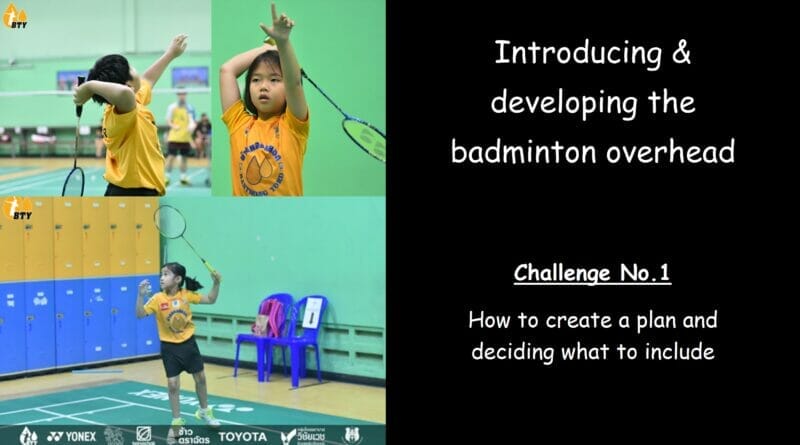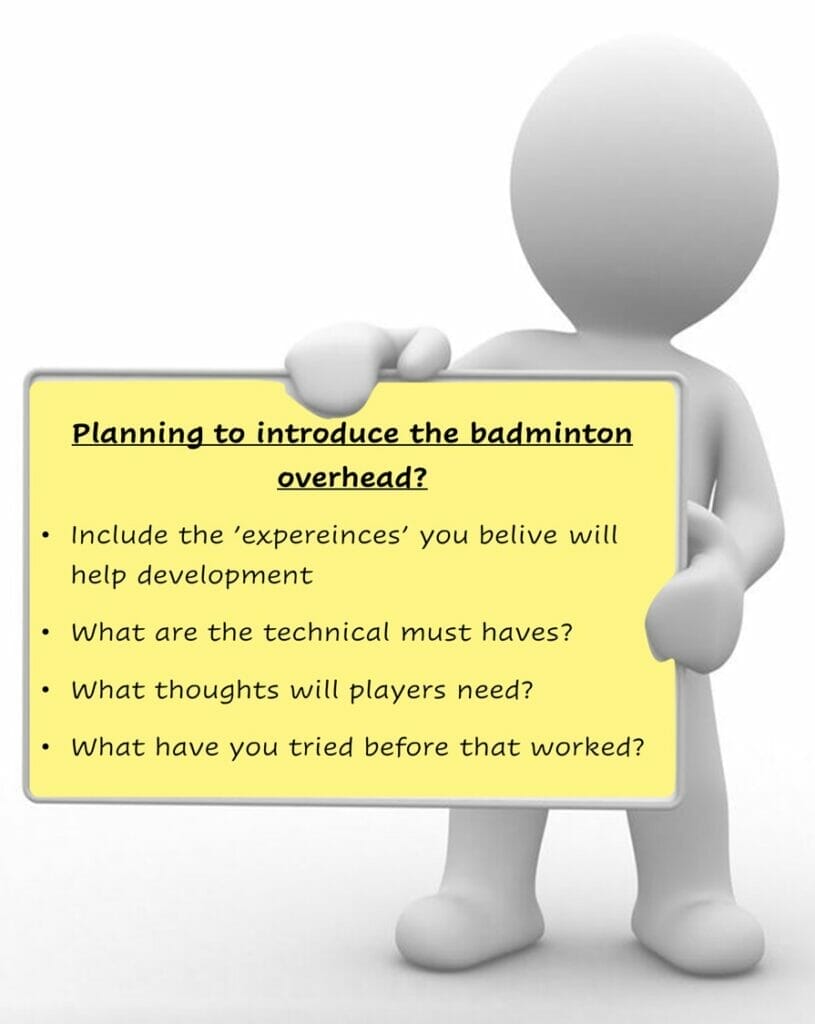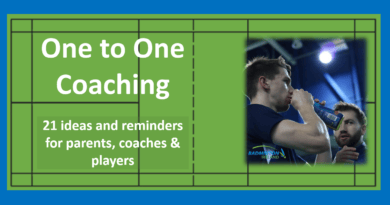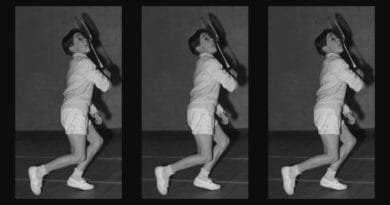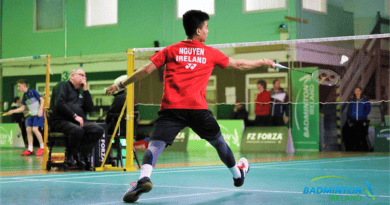Introducing the badminton overhead – Challenge No. 1
Do you have a plan for developing the badminton overhead forehand?
Especially with players during the first 6 – 8 months
What are the important early experiences and how will you create them?
A plan is essential but what should you include and why?
Do you already know some of the challenges you will face?
This post examines the challenge of putting together a plan to introduce the badminton overhead, especially when working with young players who are new to the sport. It also looks at the issues and challenges you know you will face and crucially currently accept.
You may feel challenged or ‘prickled’ at some of the points raised. My aim is to give you ideas to help make the learning a little easier and to create more smiles than struggles in your coaching sessions 🙂
It’s very easy for beginners to develop what seems like an effective technique but in fact, the ‘solution’ they come up with is probably a ‘future limiting’ technique. Maybe even techniques that could lead to injury.
– – – – – – – – – – – – – – – –
The conversation that started this mini-series

If you haven’t read the introductory post I recommend you click here or this image.
It outlines the challenges coaches face and why I believe that this movement also attracts the most coaching problems. Maybe even more than an overhead backhand.
There is also an insight into what happened when I spoke with 2 other coaches about these challenges and how at times, we disagreed! I’ve outlined some of the thoughts we had during our conversation.
– – – – – – – – – – – – – – – – – –
Creating a plan, what to include?
Some general thoughts
5 questions to discuss with another coach
It’s your choice
The methodologies you use
Methodologies commonly used that aren’t effective
Conversation starters
– – – – – – – – – – – – – – – –
Some general thoughts
You have several questions when planning what to include. Some of these may be easy to answer, and other aspects may need research and thoughts.
There certainly isn’t a fixed step-by-step sequence. There also isn’t a set of ‘magic’ practices that solve all your issues.
I’d recommend that you create a planed that has general guidelines and prompts for you to follow.
It should contain practices that create experiences for players to help with development. Experiences that contain the technical elements you want to introduce, but often without the player being aware of them. Try to make them repeatable but with in-built variations.
Include themes and cues that the players can repeat without much coach control.
Emphasise practices/experiences that restrict the opportunities for inappropriate (future limiting) techniques from appearing. However. also include those that allow players to enjoy (and engage with) their development.
Challenge yourself to create a development structure that includes: enjoyment, challenge, intrigue, wonderment, engagement, robustness (possibly the hardest) and success. Making as many repeatable so they can as reminders at the start of the next session.
These aspects apply to both the Player and the Coach. Do you recognise these aspects in your practices?
Ask a coaching friend for their observations, or sit and watch someone working with a beginner player and identify the elements they use. Not just the technical points, but how they structure practice.
Structured practice for introducing overheads is much more than a list of technical requirements
– – – – – – – – – – – – – – – –
5 questions to discuss with another coach
- What are the core technical elements that you like to see in a badminton overhead technique? – specifically for a novice player
- What could be established before starting overhead work?– use some previous experience and learning before rating, why wouldn’t you!
- How does your knowledge compare to other coaches? – would you be willing to share your plan (your ideas) to get feedback and some new/alternative viewpoints
- How flexible are your thoughts? – do you have at least 2 or 3 different ways (methodologies) to coach specific parts of the plan or just one go to method
- What do you want the players to know and hear? – would you ‘package’ your information differently for them, are there advantages to them not knowing all that you know?
Whilst all these questions are important
Do you agree that no. 2 and 5 are the most impactful?
– – – – – – – – – – – – – – – –
It’s your choice
Whatever you include in your plan please ensure that it’s specific to beginner players and their stage of development.
It’s important to not only to asesses what they can do technically and physically but also emotionally and socially. How do they react to instructions, the period of time that they can practice before becoming ‘saturated‘, do they like challenges and how do they react to error.
Understanding these aspects about the group or person in front of you is probably more important than the amount of technical information that you know. When and critically how you decide to give a practice or information is dependent on the ‘person/group’ characteristics. It can be the difference between success and struggle, for both the payer and you the coach!
Not everything is important
There will be technical aspects that whilst important do not need to be included in your beginner plan. There are also coaching methodologies (how you practice) that need to be adapted to suit the needs of your beginner players.
Resist the temptation to throw everything you know or have seen others do into your plan. More is not often better!
Only you can decide what aspects need to be emphasised, this linked post suggests the 4 technical ‘must haves’.
What are your must-have’s in any overhead forehand practice?
- the technical must-haves
- the psychological must-haves (maybe harder to decide than the technical must-haves)
- the must-have practice experiences (maybe the most important of all!)
You can’t coach every player in the same way
but your coaching should be full of similarities
– – – – – – – – – – – – – – – –
The methodologies you use
A plan isn’t just a list of technical points to show or worse, tell the players. It should also include a strategy of how you will act and the coaching methods you may use.
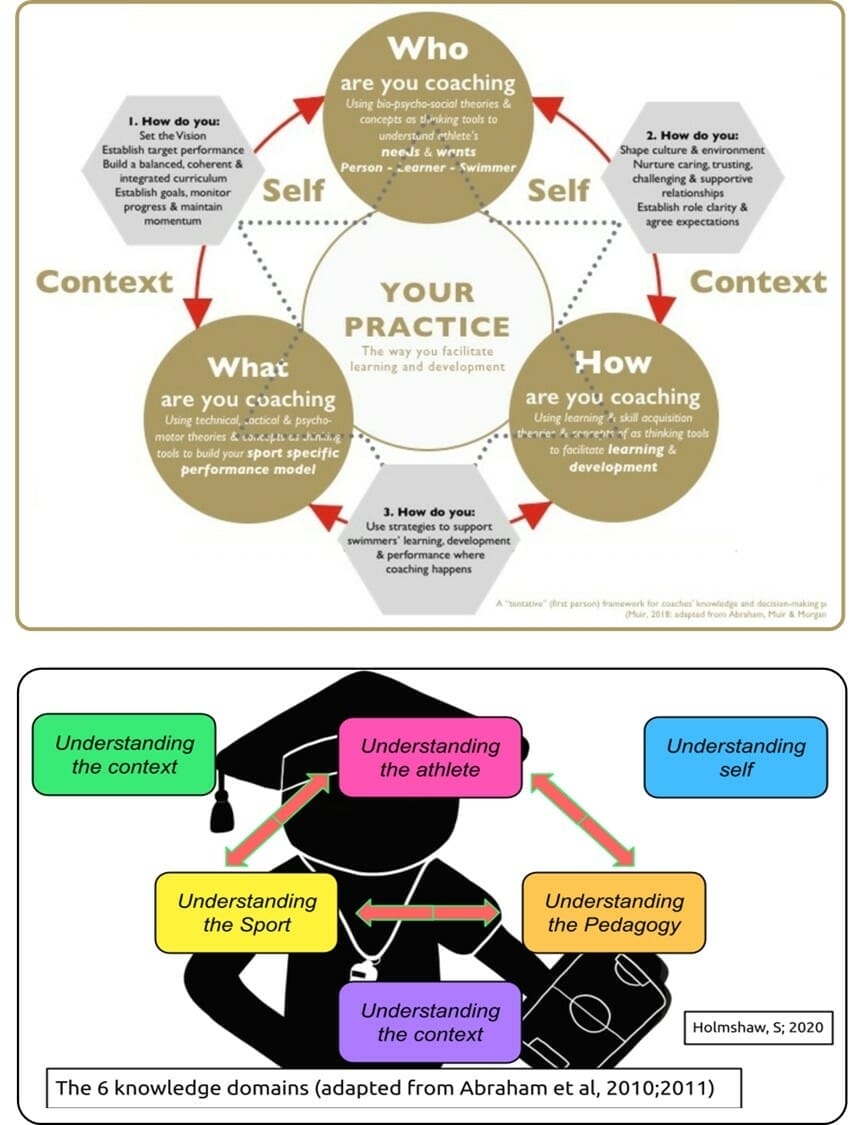 The methodologies describe how you will go about your coaching. Some will be effective at times, and at other times not.
The methodologies describe how you will go about your coaching. Some will be effective at times, and at other times not.
Even if you aren’t sure about the methodologies you use, I’m sure if you consider what you do that you will find a few that are easy to spot.
- How much information do you prefer to give, when and how
- Do you set challenges and expectations or are you reluctant to ‘push’
- How do you deal with mistakes, errors, player judgements
- How deliberate are you in your conversations with players
- What’s your view on asking beginner players questions
- Do you like to practice the same thing repeatedly, or deliberately include variations
- What are your thoughts about players being aware of their developments, techniques, motivations
- (How do you judge your coaching performance or don’t you)
Would you agree that selecting your coaching methods and designing the practice
is more important than the technical/tactical content?
– – – – – – – – – – – – – – – –
Methodologies commonly used that aren’t effective
Below are 4 methodologies or beliefs that are commonly used that probably don’t deliver the effectiveness players deserve.
They do work sometimes and you may already use them. However on on balance across a range of beginner players, these methodologies or beliefs are not effective.
Do you agree?
Of course, I don’t know the context within which you are working and you may disagree with the points below. The context and player specific requirements are very important.
Be careful of these methodologies when working with beginners – each has a hidden danger
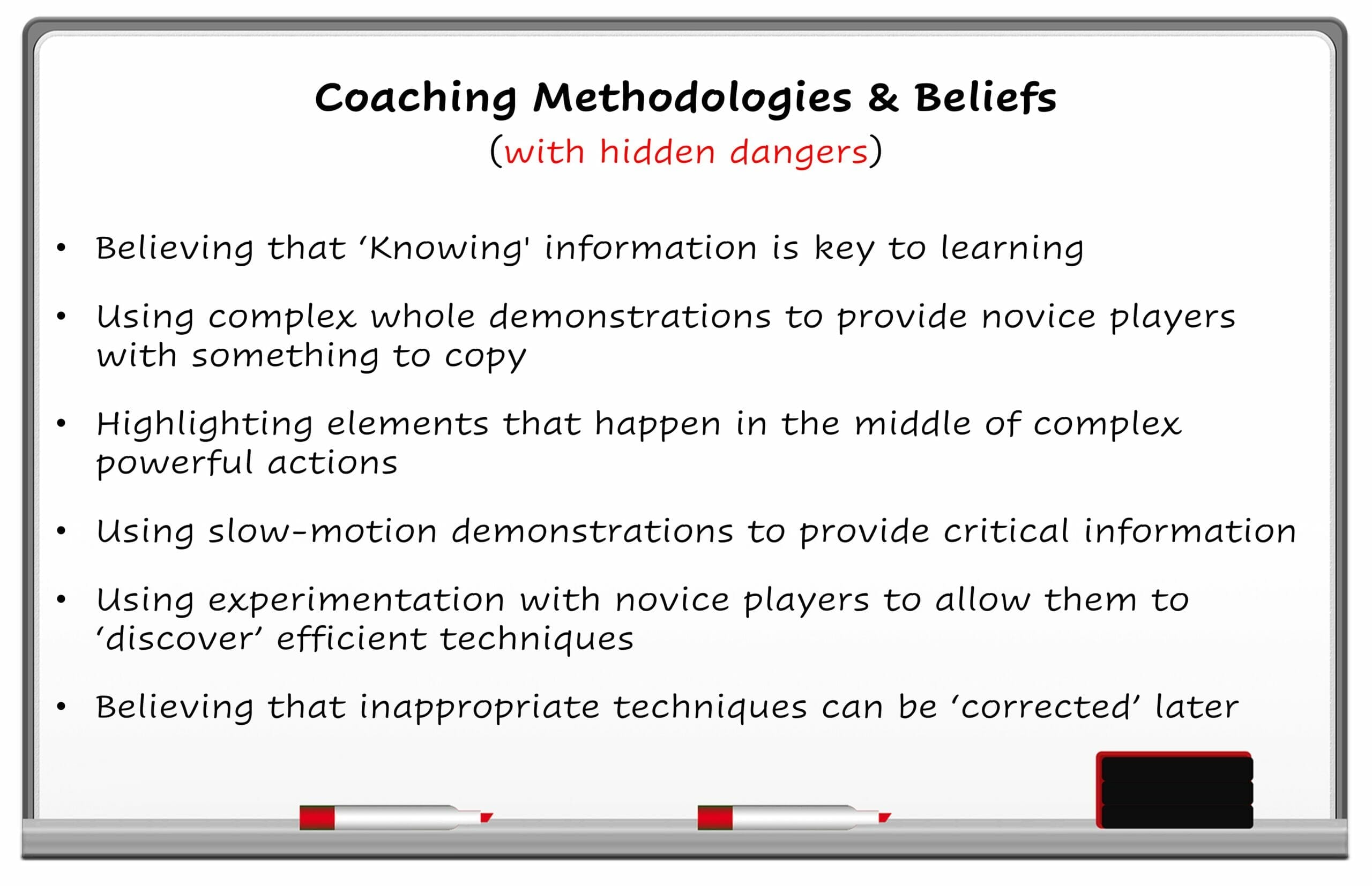
Believing that ‘knowing’ information is key to learning – be careful what you select and how you transmit information to players. Read more here (its challenge no.4)
Using complex whole demonstrations to provide novice players with something to copy – you may be able to demo these complex badminton overhead forehand movements, but can these beginners achieve success and gain progressive value from copying you? Whole isolated movements and combinations of whole movements require progressive practice, not just replication.
Highlighting elements that happen in the middle of a complex powerful action – can beginners control and adjust their limbs in the middle of powerful overhead throwing movements? Can you? Do you know exactly what your joints and limbs are doing in the middle of an action? Maybe at the start and end, but once the power starts can you control exactly exactly happens?
Using slow-motion demonstrations to provide critical information – easy to demo and practice, but is there an effective carry-over into powerful movements? Do you see a positive outcome from using slow-motion demonstrations for overhead throwing actions, or is it just another way for you to transfer information? Maybe other hitting actions relate better to slow-motion demonstrations, is that true?
Using experimentation with novice players to allow them to ‘discover’ efficient techniques – what do you see when novice players start to discover ways of striking overhead? Does this selfd-discovery (development by self-organisation) of badminton overhead striking produce the throwing options you like? How effective is self-discovery for overhead striking?
Believing that inappropriate techniques can be ‘corrected’ later – “let them hit”, “too much coaching is bad”, “I can correct later”, do these coaching philosophies really work?
– – – – – – – – – – – – – – – –
Conversation starters
Why not consider having a conversation with some friends when we considered the questions :
“What are the core components that all badminton overhead forehands should have?”
Click on each of the headings below to read more. They will take you to other posts on this website so you may wish to read to the end before clicking on them.
Please note that they aren’t in any specific order of importance as all are important.
-
Develop ‘trust/confidence in the coach & the journey
-
The early technique ‘must-haves
-
Practice throwing and getting off the ground
-
What could come before
-
How to select
Choosing your coaching method and designing the practice
is it probably more important than the technical/tactical content?

